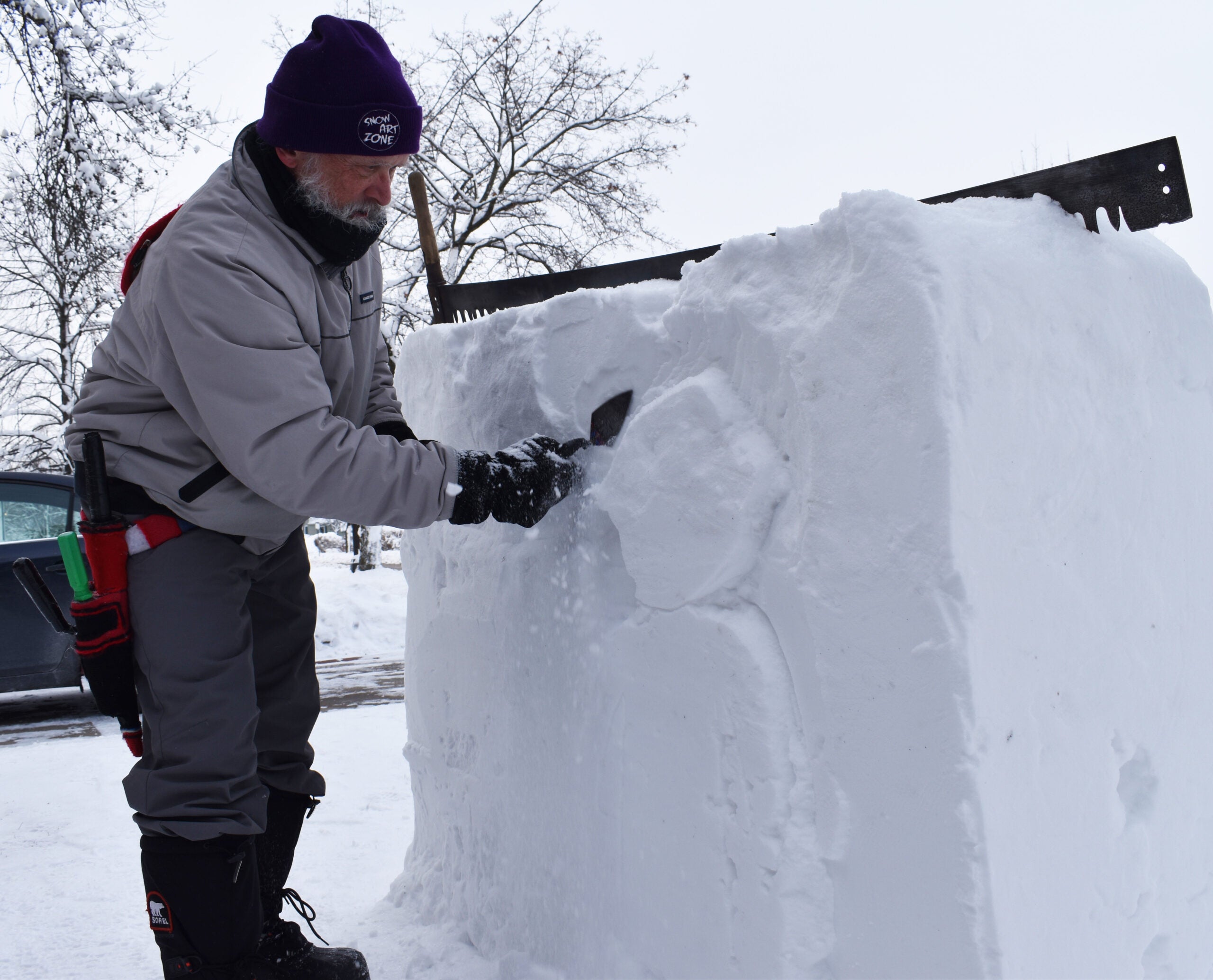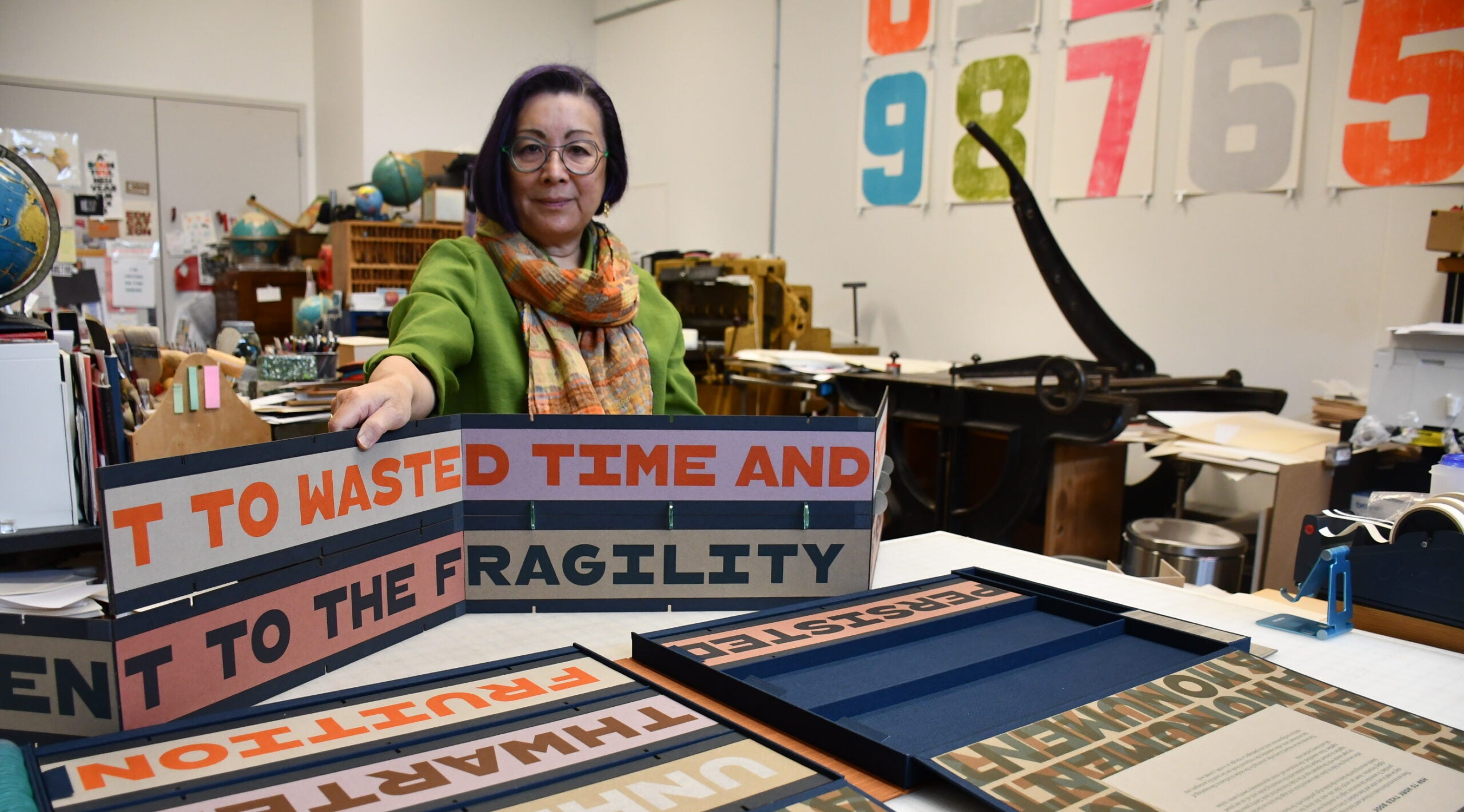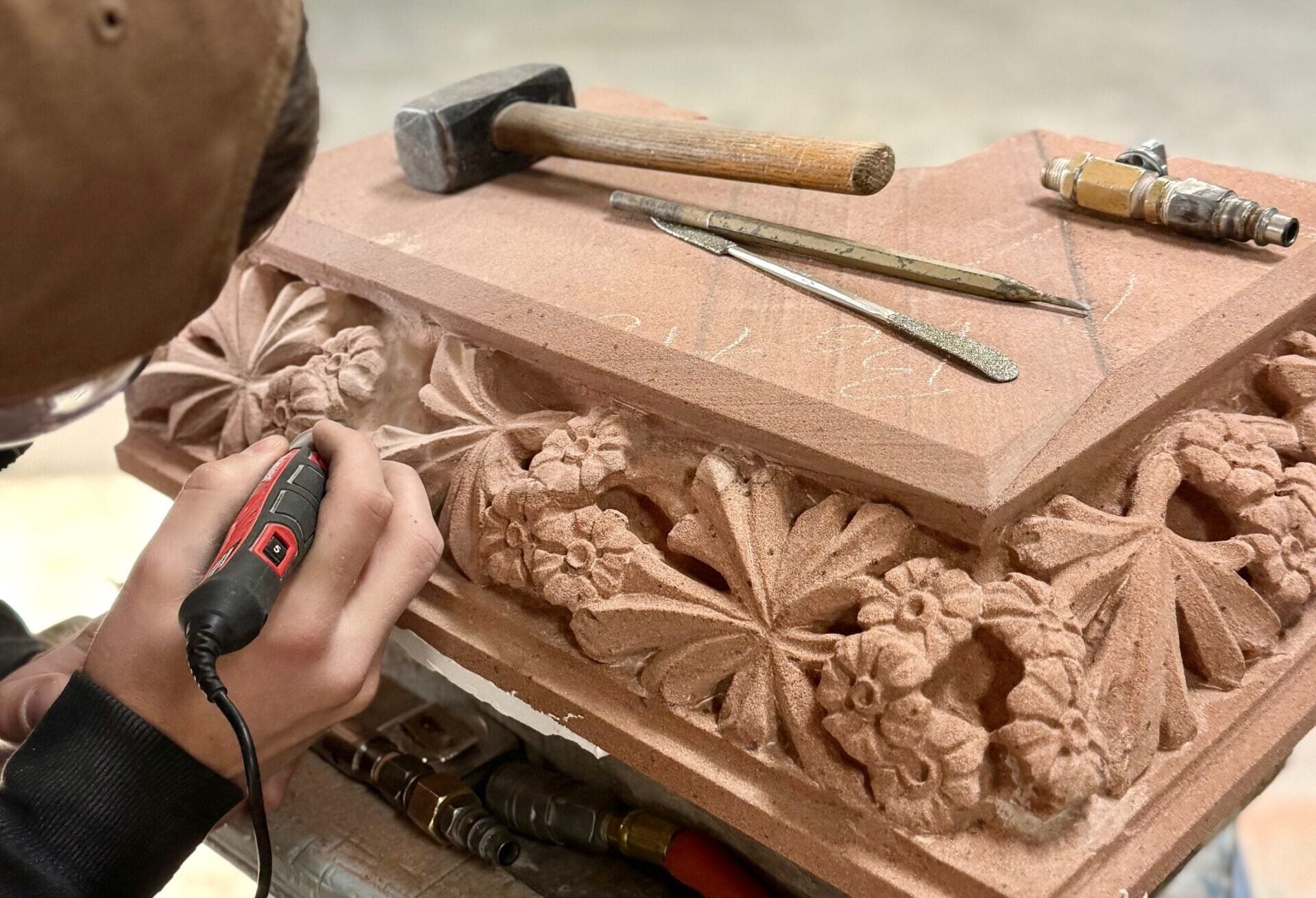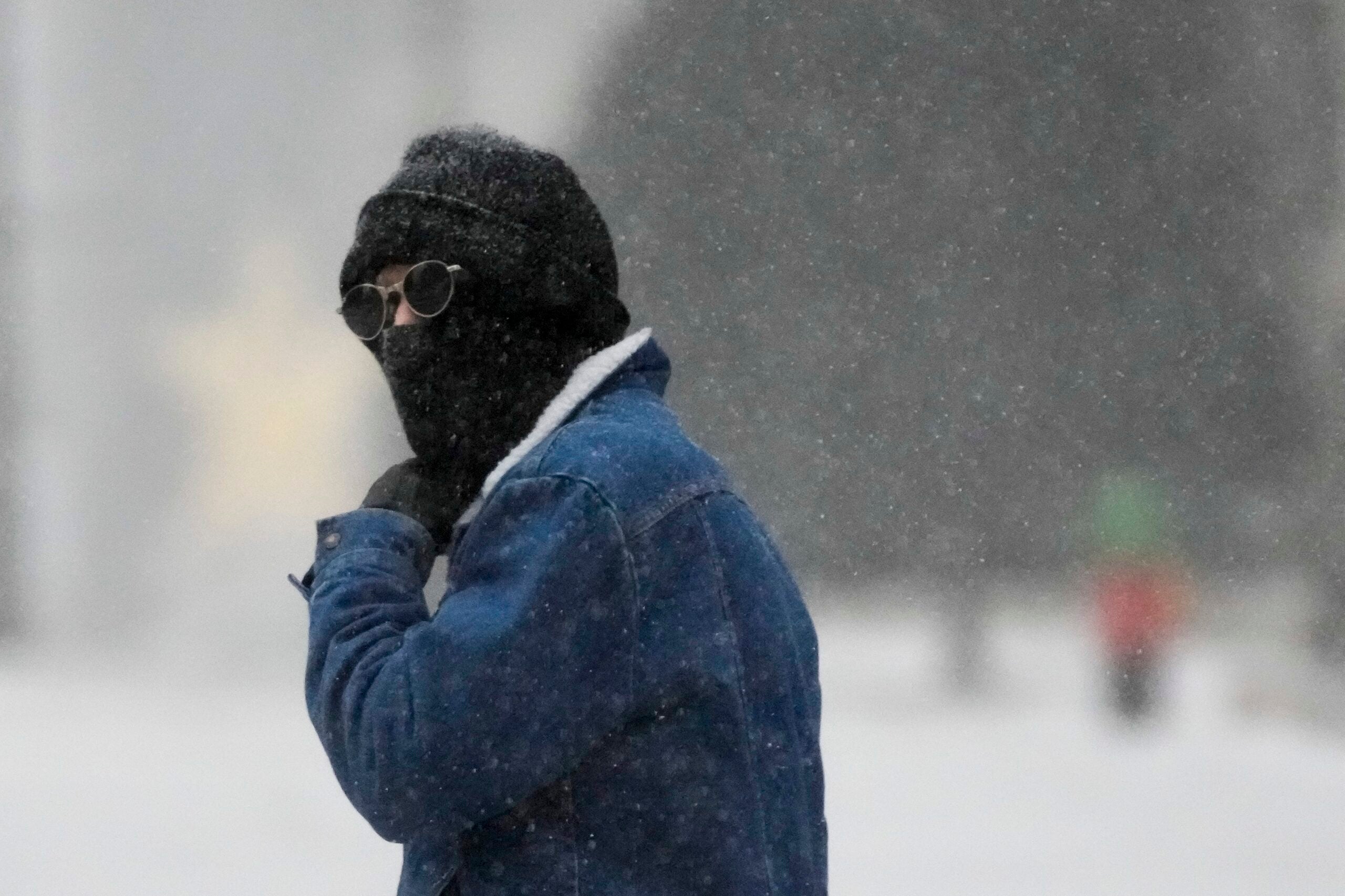When Jef Schobert started making snow sculptures, he faced them toward his house. He’d shape a Mickey Mouse or some other cartoon character for his young daughter.
One day, his mail carrier stopped and told him he should make them face the street, for everyone to enjoy.
“It kind of blew my mind,” said Schobert, a 57-year-old with a white Santa Claus beard.
News with a little more humanity
WPR’s “Wisconsin Today” newsletter keeps you connected to the state you love without feeling overwhelmed. No paywall. No agenda. No corporate filter.
That was likely thousands of snow sculptures ago. In the decades since he started making them, Schobert’s annual sculptures have become a fixture outside his Stevens Point home, which he calls the Snow Art Zone. He makes around 100 different pieces per winter — carvings of a castle or a carriage or Aquaman on a throne — and posts photos and videos on his Facebook, Instagram and TikTok pages. Occasionally, one goes viral, as did his January 2021 sculpture of Vermont Sen. Bernie Sanders wearing mittens.
“Snow is very temporary,” Schobert said. “I take pictures of it, and the pictures then become my art, even after the art’s gone.”
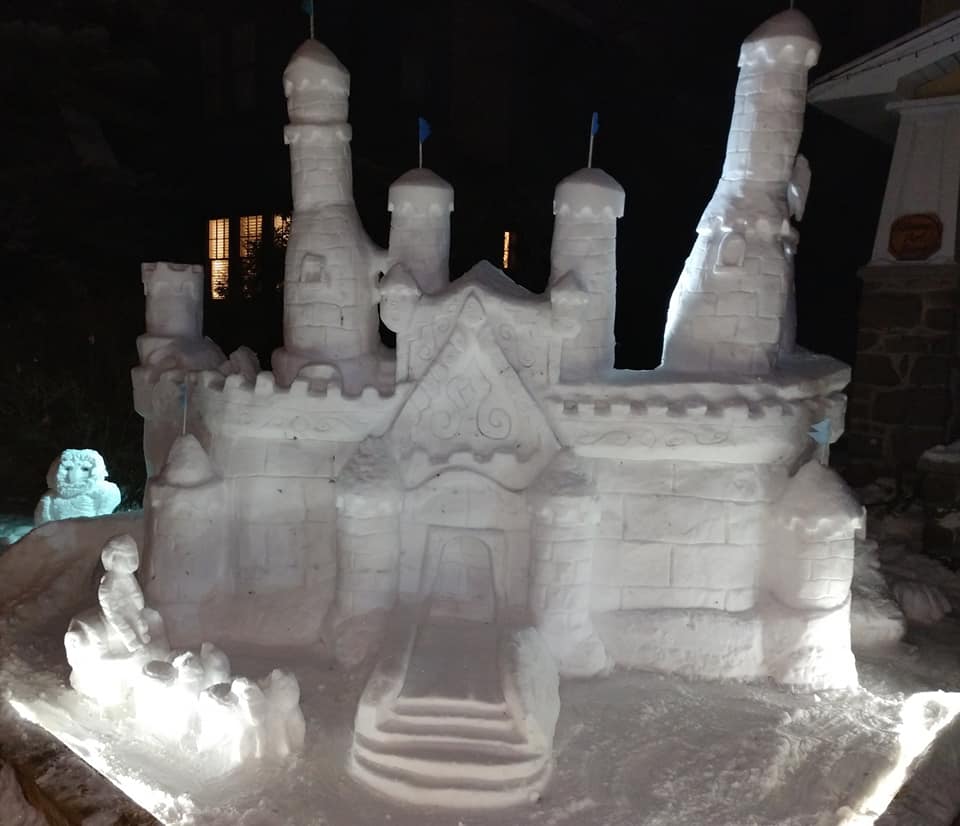
He starts by packing the snow into a four-foot-tall block, using wooden panels with hinges that he created. With just about 1 inch of snow in his yard, he can make a block that works for a sculpture. In recent years, early-season snow has been rare, but 2022 has brought him plenty of raw material to work with.
He uses an 18-inch machete to make rough cuts, and follows it up with a screwdriver that he uses to score the sculpture and make straight marks. For detail carving, he pulls out a small trowel with its edges honed to a sharp point. He works fast; even his most elaborate sculptures tend to take him about three hours, most of which is spent packing the snow into blocks.
“You can’t be afraid of the snow,” he said as he raked the trowel across one of his blocks of snow, sending cascades of precipitation to the ground. “But it’s super fragile!”
The lifespan of one of his sculptures can vary. If he gets bored of one, he’ll demolish it and repack the snow into a new block for the next sculpture. He’s made small, simple snowmen and giant, 12-foot-tall skeletons. He places most of the sculptures in the northeast corner of his Clark Street house, where it is shaded by his house, his neighbor’s house and a tall pine tree virtually all day.
In the spring, he said, “when everyone else’s snow is all gone, I still have snow. I’ve found this is the spot. I’ve created a refrigerated unit.”
Schobert is an Army veteran, disabled by complications from a knee injury during his time in the service. He said the sculptures are a way of exercising his body can handle, as well as a creative outlet. And he takes pride in the fact that his artwork is environmentally friendly.
“Snow is a particulate of a piece of dirt in the atmosphere that then freezes the moisture, and then it lands,” he said. “So I’m taking a particle of dirt and creating something beautiful out of it.”
Wisconsin Public Radio, © Copyright 2025, Board of Regents of the University of Wisconsin System and Wisconsin Educational Communications Board.

